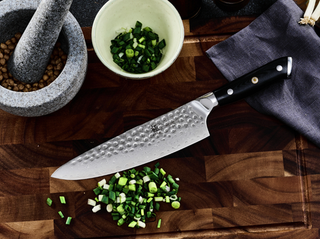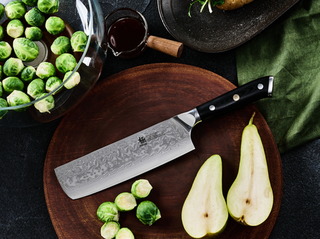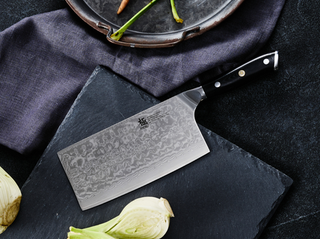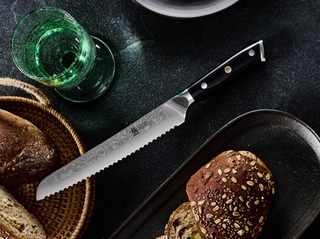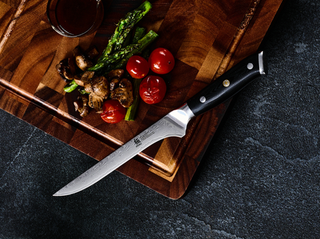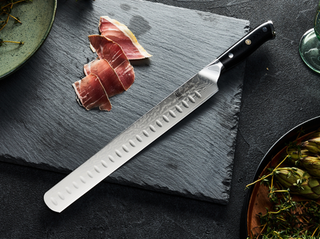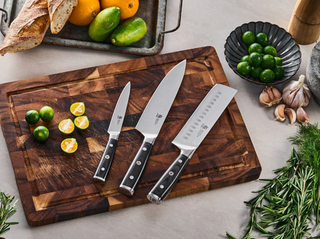Pomegranates are not just delicious but also bursting with antioxidants and vitamins. However, peeling them can be troublesome. But don't worry – with the right approach, you can turn this daunting task into an easy and even enjoyable kitchen activity. The key is to acquire a high-quality paring knife and to master a few steps. Whether you are a seasoned chef or a home cook, this guide will help you peel a pomegranate like a pro.
How to Select a Pomegranate?
Selecting the right pomegranate is the first step toward success. Here’s what you can look for when selecting pomegranates:
- Appearance: The skin of the pomegranate should be firm and free from major blemishes. Look for a vibrant color that ranges from deep red to reddish-brown. Minor imperfections on the skin usually don't affect the quality of the seeds inside.
- Weight: Pick a pomegranate that feels heavy for its size. This indicates it is full of juicy arils.

What Tools Are Needed for Peeling?
Peeling a pomegranate doesn’t have to be a messy ordeal if you have the right tools at hand. Here’s what you’ll need:
1. A Sharp Paring Knife: This is your primary tool. A sharp knife can ensure precise cuts, helping you avoid damaging the delicate seeds.
2. A Cutting Board: Provides a stable surface for all your cutting and peeling activities.
3. A Bowl of Water: A bowl of water can help prevent juice splatter and makes separating the seeds from the membrane easier.
How to Peel a Pomegranate Without Making a Mess: A Step-by-Step Guide
Ready to peel a pomegranate like a pro? Follow these simple steps:
1. Prepare the Pomegranate for Peeling
Start by placing your pomegranate on a cutting board. Take your sharp paring knife and carefully slice off a small piece, about 1/4-inch thick, from the bottom (stem end) of the fruit. This can create a stable base, making it easier to handle in the next steps.

2. Remove the Crown
Next, find the crown of the pomegranate – it looks like a small crown on the top of the fruit. Using your paring knife, gently carve a shallow circle around the crown and lift it out. Make this cut at a shallow angle to avoid damaging the seeds just beneath the surface.
3. Score the Skin
Look for the subtle ridges on the pomegranate's surface. These ridges are your guides for where to make your vertical cuts. Gently score the skin along these ridges from the top (crown end) to the bottom (stem end). Be careful to penetrate only the red outer skin, not the seeds. Aim for about six equally spaced cuts around the fruit. If you can't feel the ridges, simply space your cuts evenly.

4. Open the Pomegranate
Carefully pull apart the pomegranate along the scored lines. It should naturally separate into sections, revealing clusters of seeds inside. Doing this over a large bowl can help catch any falling seeds and reduce mess.
5. Extract the Seeds
Now, working over the bowl, gently loosen the seeds from the peel and inner white membranes by hand. For a cleaner separation, half-fill the bowl with water. The seeds will sink to the bottom, and the lighter membrane will float, making removing them easy. This method also minimizes the risk of juice staining your workspace.

6. Enjoy Your Pomegranate
Transfer the freed seeds to a serving bowl and enjoy them fresh. Just be careful when you are eating. If the seeds fall onto a light-colored carpet and get crushed, they can cause stains.
Best Paring Knives for Peeling Pomegranates on the Market
As you can see, the quality of your paring knife can make a significant difference during the process of peeling pomegranates. A sharp, well-designed paring knife not only makes the task easier but also safer and more enjoyable. Here are two top picks:
1. 3.5" PARING KNIVES DAMASCUS STEEL | SHOGUN SERIES
This knife is made of VG-10 stainless steel and has an ultra-sharp edge, ensuring precise cuts with minimal effort. The G-10 fiberglass handle is also ergonomically designed for comfort and control, allowing you to use it for extended periods with less fatigue. This paring knife is ideal for both professional chefs and home cooks who want top-quality tools in their kitchens.
2. 4.5" PARING KNIFE| DAIMYO SERIES
The blade of this knife is made from vacuum-heated Japanese 440C stainless steel. With a Rockwell hardness of 59-60, this knife boasts exceptional durability and edge retention. The scalpel-like edge, angled at 13-15 degrees, excels in tasks like peeling pomegranates. Besides, the rosewood handle offers a secure and comfortable grip, making intricate tasks easy to manage.
In summary, mastering how to peel a pomegranate and knowing the best tools for the task can significantly enhance your culinary experience. By choosing the right paring knife and learning how to peel a pomegranate, you ensure that you can enjoy this delicious and nutritious fruit easily. Whether you are a seasoned chef or just starting out in the kitchen, these tips and tools are helpful for making the most of the pomegranate season.
